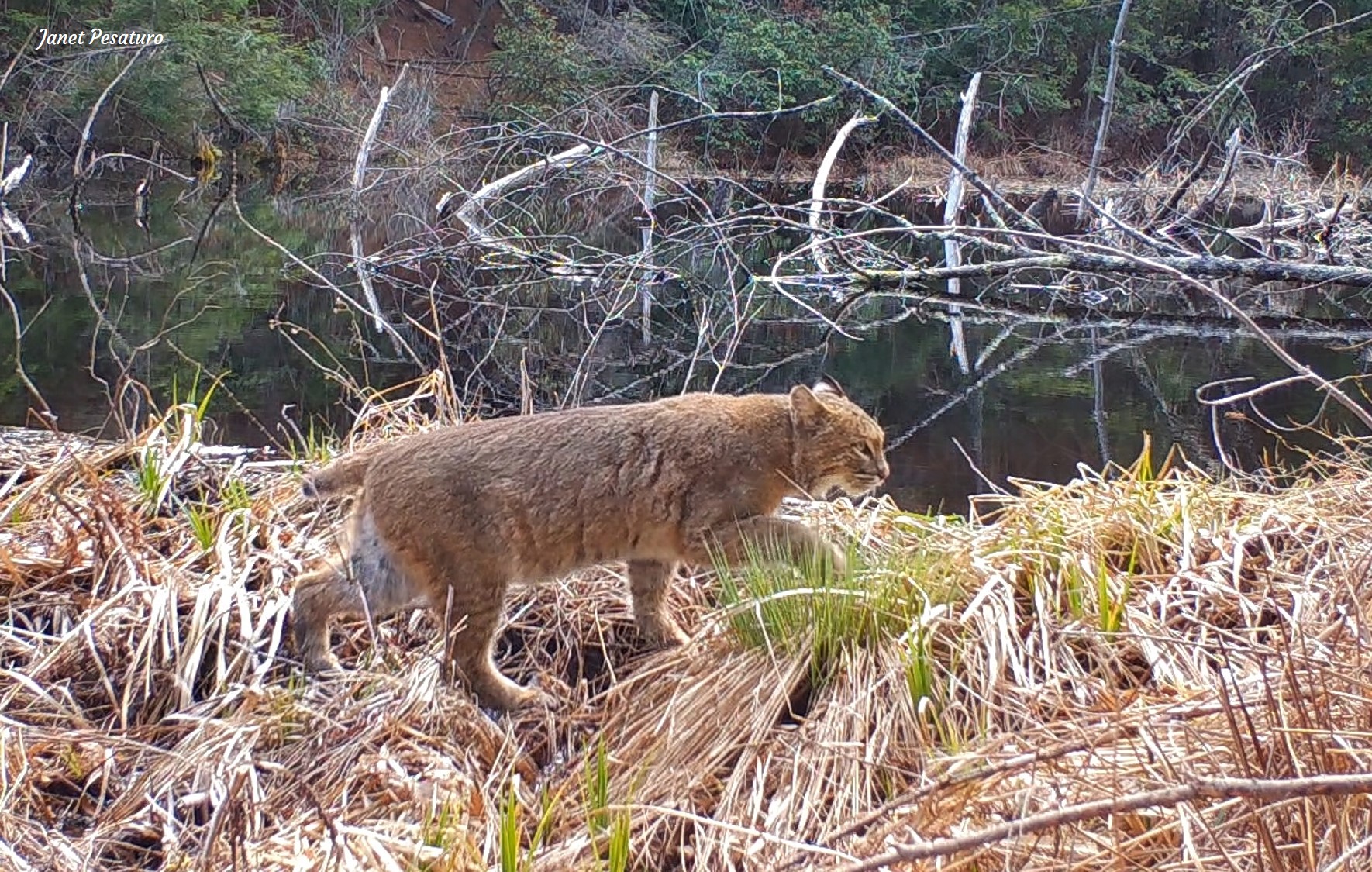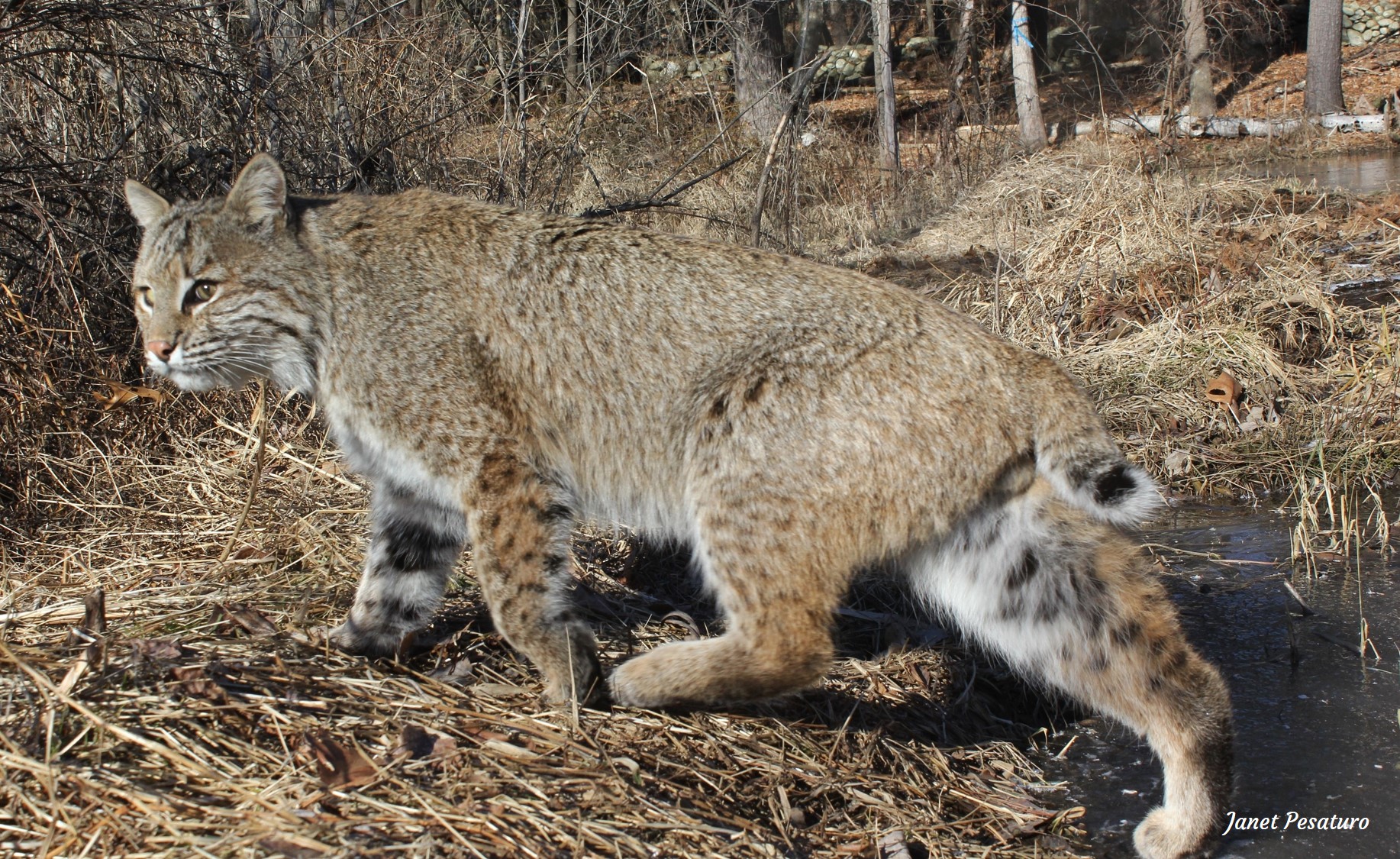Bobcats and Beaver Ponds

The bobcat (Lynx rufus) is the most successful of North America’s wild felines, and one reason for its success is its diet. Like its cousin the Canada lynx, the bobcat relishes a meal of rabbit or hare, but unlike the lynx, the bobcat is not a snowshoe hare specialist. Instead, it takes a wide variety of prey and can even thrive where rabbits and hares are scarce. In New England, bobcats seem especially common at beaver ponds. That’s no surprise, given that beaver wetlands are hot spots for a wide variety of animals, including ducks, geese, frogs, snakes, fish, muskrats, voles, raccoons, mink, otter, deer, moose, and bears. Bobcats hunt the adults, young, and/or eggs of many of these species, and the vegetation around beaver ponds facilitates the feline hunting style. When beavers cut trees around the pond, more sunlight reaches the forest floor. This stimulates growth of stump sprouts, saplings and shrubs, which create the low cover that bobcats need for stalk and ambush hunting.
Bobcats may hunt anywhere around the pond, so there’s a good chance of getting one with a trail camera facing down the pond edge. However, to significantly increase the likelihood, target the beaver dam, for bobcats (like many other animals) regularly use them as bridges to cross the water. To further increase the odds, find a beaver dam near the type of cover bobcats prefer for resting and denning. Dense thickets or cliff refugia fit the bill.
The video below is a compilation of clips from a camera stationed at a beaver dam from January through early May. One section of the pond was bordered by a very dense, almost impenetrable thicket of mountain laurel, which is excellent cover for resting and denning. One or more cats used the dam frequently, both day and night. I included all of the daytime clips but only two of the night time clips. Some interesting things to notice:
- A bobcat is caterwauling in the first night time clip. The date was February 18th, the height of the mating season.
- In the second night time clip, the cat is carrying prey. I think it is a muskrat – one species that makes frequent use of the pond habitat created by beavers.
- Look carefully at the cat that appears at 1:00 minute into the video. This one seems larger and more orange than the cat that appears in the previous clip and in the following clip. I’m guessing this larger cat is a male, and the smaller, grayer cat is a female. I still have the camera in that spot, and hope to see kittens in summer!
The following photo was also captured at a beaver dam, and next to this pond is a large area of very dense thickets of multiflora rose and other non-native shrubs. Bobcats don’t care if the plants that provide cover are native or not. They are quick to make use of abandoned agricultural fields once populated with a tangle of shrubbery.

And at the same dam, I captured a pair of bobcats traveling together in mid-February: on Valentines Day, no less! This is most likely a mating pair, but possibly a female with her now grown kitten from the previous spring.
Have you noticed that bobcats frequently use beaver wetlands? Tell us about your experiences in a comment below.

Wonderful images and information, Janet. I always learn something new from each of your posts. I consider each one a gift and a blessing. Keep ’em coming, I say!
Thanks, Lori. I hope you are well!
Good stuff as always! Can’t to hear if there are indeed kittens. And thanks again for sharing your knowledge. Its It’s especially appreciated now
I’m glad it’s useful, Anne Marie. Stay well.
Hi – really great captures of beautiful bobcats. Have you seen them hunt beaver kits? I hope not, but just wondering if they are frequently visiting the dams.
Thanks to for sharing the difference between male and female. I too am watching a pair- and impressed with the size and coloring of the make who showed in early March. Been enjoying seeing on camera and IRL the female in her various hunting hangouts since January. There is Beaver and Mink action on the banks of the river below where the cats hang out but never caught the cats at the river yet. BTW: I purchased your book and have been learning great tracking tips !
Hi Pam, I’ve not personally seen bobcats hunt beaver kits but I’m sure that they and other predators do. The kits aren’t born till May or June, so the one in my video couldn’t have had one. Beaver kits are vulnerable when they come on land while still small, which would be in their first summer and fall. It’s probably a good thing that bobcats and other mid sized predators take some of them because adult beavers have no non-human predator in the Northeast. And just to clarify on the difference between male and female bobcats – they do differ in size but either sex can have more or less orange or gray in the coat. I’m glad you are finding my book useful – thanks for letting me know!
Great video clips. Unfortunately, we don’t have many beaver colonies in northcentral Pennsylvania — but I have camera trapped a bobcat at a beaver lodge. Many of our beavers are “bank beavers” and live in burrows along the larger streams rather than build a dam on smaller streams. An overabundance of white-tailed deer has severely impacted beaver habitat. Once beavers have cut all suitable trees within reach of water, deer so heavily browse any tree reproduction that might start that most seedlings die and there’s little food for beavers.
Very interesting, Woody. That’s probably going on here to some degree, but the beavers manage to eke out a living anyway. Most of the beaver ponds I’ve seen in Mass. are now surrounded by mostly conifers, and beavers are still using them. It doesn’t seem possible that they could survive with so little deciduous trees available, but they do. They abandon some of these ponds eventually but I have been amazed at how long they hang on.